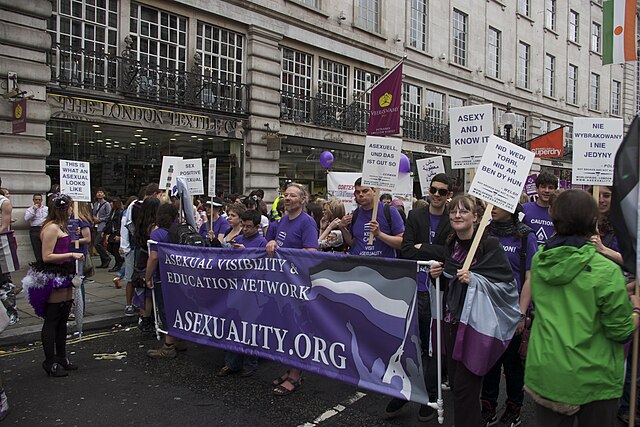In a few days I’ll be giving a presentation to other counselors about asexual-friendly therapy! I’m so excited to help other mental health professionals provide more supportive healthcare to asexual folks. And I thought I’d give you a taste of what I’ll be talking about!
What is asexuality?
Asexuality is a sexual orientation. In the same way bisexual people are attracted to multiple genders, and straight people are attracted to the opposite gender, asexual people aren’t sexually attracted to any gender. Some asexual people may still have romantic feelings for others, and some don’t. The Asexual Visibility and Education Network and Resources for Ace Survivors are two excellent websites to learn more, and they aim to help asexual folks find support and community.
Why do we need therapy that supports asexual people?
Many people don’t know what asexuality is. If you don’t know that it’s a thing, you might confuse it for a sexual disorder. Asexual people are often told, “You just haven’t found the right person yet,” “If you really loved someone you’d feel sexually attracted to them,” or “What’s wrong? Everybody likes sex.” These statements can be hurtful and make asexual people worry that there’s something wrong with them.
It is also difficult for asexual people to find asexual-friendly therapy. They may go to a therapist and talk about coming out, and trying to find compatible partners, only to be told their orientation is a problem. They may be pressured into treatments intended to help non-asexual people, but which only reinforce the message that asexuality needs to be fixed. This makes it harder for asexual people to receive mental healthcare for depression, anxiety, relationship issues, and all the other challenges that anybody may seek therapy for.
Asexual-friendly therapy has benefits for everyone
Even if someone isn’t asexual, it is useful for their counselor to be informed about asexuality. If a therapist knows that it is normal for some people to not feel sexual attraction, that therapist is less likely to pathologize low sexual desire for all their clients. It’s also reassuring for clients who feel worried that something is wrong with their sexuality. It means that they get to decide what their sexual experiences mean to them. They can choose to have sex or not for their own reasons, instead of trying to become more “normal.” Knowing that sexuality is “optional” is liberating for people who don’t feel ready for it.
How counselors can provide more asexual-friendly therapy
Counselors should treat asexuality as real, healthy, and one of many normal sexual orientations. Asexuality does not need to be fixed. Just like how gay people don’t need to become straight to be happy and fulfilled. If an asexual client doesn’t want their sexual life to change, the therapist should not look for ways to make it “better.”
Secondly, therapists should understand that asexuality is a spectrum. Many people identify with some parts of asexuality, but also feel like their identity is a little more complicated. Gray-asexual people may only feel sexual attraction very rarely, or faintly. Demisexual people may only feel attracted to people they already have an emotional bond with. Let people have complex or fuzzy relationships with their sexuality, instead of trying to fit people into categories.
Third, therapists should prioritize client autonomy. It is empowering for clients to decide what their experiences mean to them. This can be confusing, frustrating or scary, but this helps clients build their own confidence and boundaries. Also, it is common for people to change their identity labels over time; this is a form of growth.
There are many more details I’d love to go into, but don’t have space for here. Contact me if you’re interested in learning more, if you’re interested in therapy for yourself, or if you want to know more about my style of counseling.


